Executive Director: Diamond Innovation Center
Email:karim@seenexus.ae
www.thesustainablecity.ae

The Sustainable City in 2017 avoided 6,500 tons of greenhouse gas emissions (tCO2e), which is equivalent to removing 670 SUVs from the roads for one year.
The Sustainable City is a low-carbon city from design to operation -its goal is to mitigate climate change through a series of environmental
features and community education. To audit emissions, the project is carrying out a greenhouse gas inventory using the guidelines of the Global
Protocol for Community-Scale Greenhouse Gas Emission Inventories, in partnership with Emirates Wildlife Society (WWF) and Dubai Carbon Center of
Excellence (DCCE).
The Inventory is an extensive effort to measure greenhouse gas emissions from all major activities within the
project boundaries, and identify opportunities for improved carbon management. Specifically, the Inventory tallies emissions
discharged into the atmosphere from human activities broken down into five sectors:
(1) Energy,
(2) Waste,
(3) Transportation,
(4) Industrial processes and product use, and
(5) Agriculture, forestry and land use.
The Sustainable City has implemented several strategies and leveraged multiple opportunities to cut emissions coming from these sectors, from demand side management to biodiesel B100.
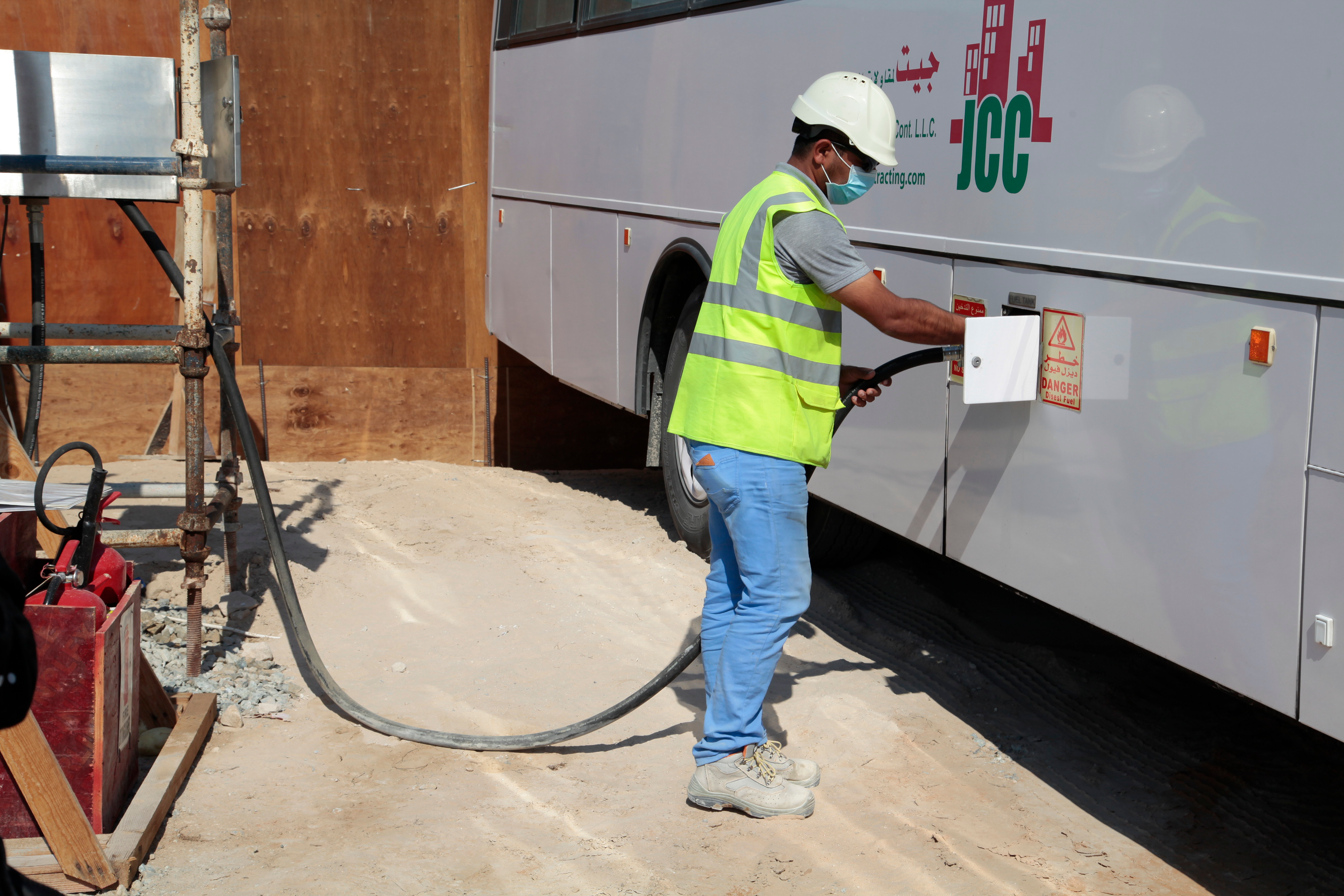
|
Biodiesel B100 in Phase 2 The Sustainable City in 2017 avoided 6,500 tons of greenhouse gas emissions (tCO2e), which is equivalent to removing 670 SUVs from the roads for one year. |
Energy demand side management plays a critical role in achieving a low-carbon future.
Reducing demand through design innovation and by promoting sustainable practices are effective demand side management
tools and help curb emissions. Passive design (orientation) and energy efficiency (insulation, VRF air conditioning, and LED lighting)
have significantly reduced energy requirements of the villas resulting in an Energy Use Intensity (EUI) of 97 kWh/m2/year,
which is at least 40% lower than the EUI values of green building in the UAE. |
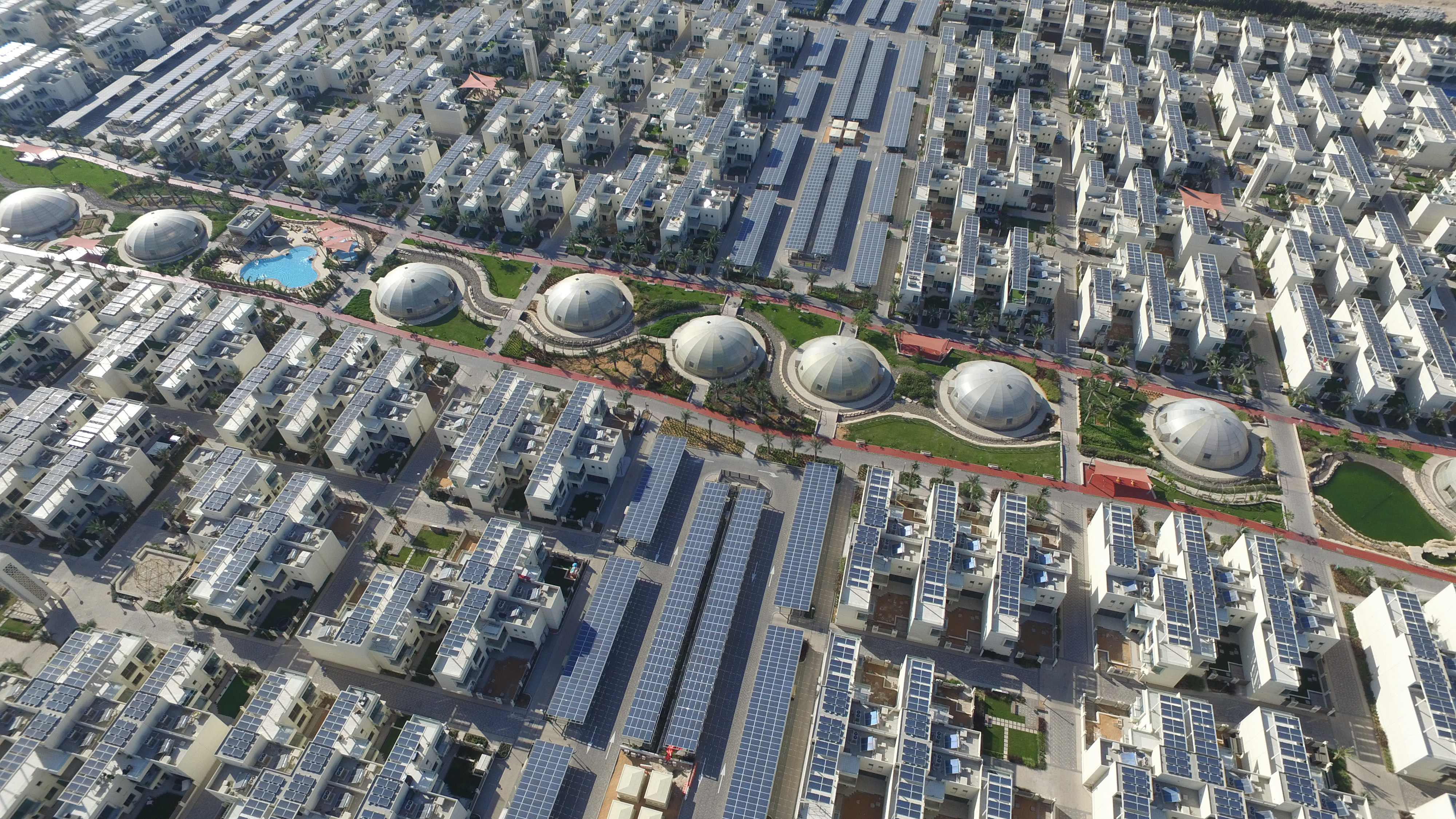
in the UAE can produce up to 1600 kWh per KWp per year. To achieve net zero, The Sustainable City is installing up to 10 MWp of solar photovoltaic panels to meet the estimated annual demand of 16 million kWh for the entire project. Smart regulation and DEWA’s “shams” program allows net metering by tenants (residential as well as commercial) who have deployed solar rooftop PV; direct consumption avoids pulling grid electricity while surplus electricity is exported to the grid to offset utility bills.
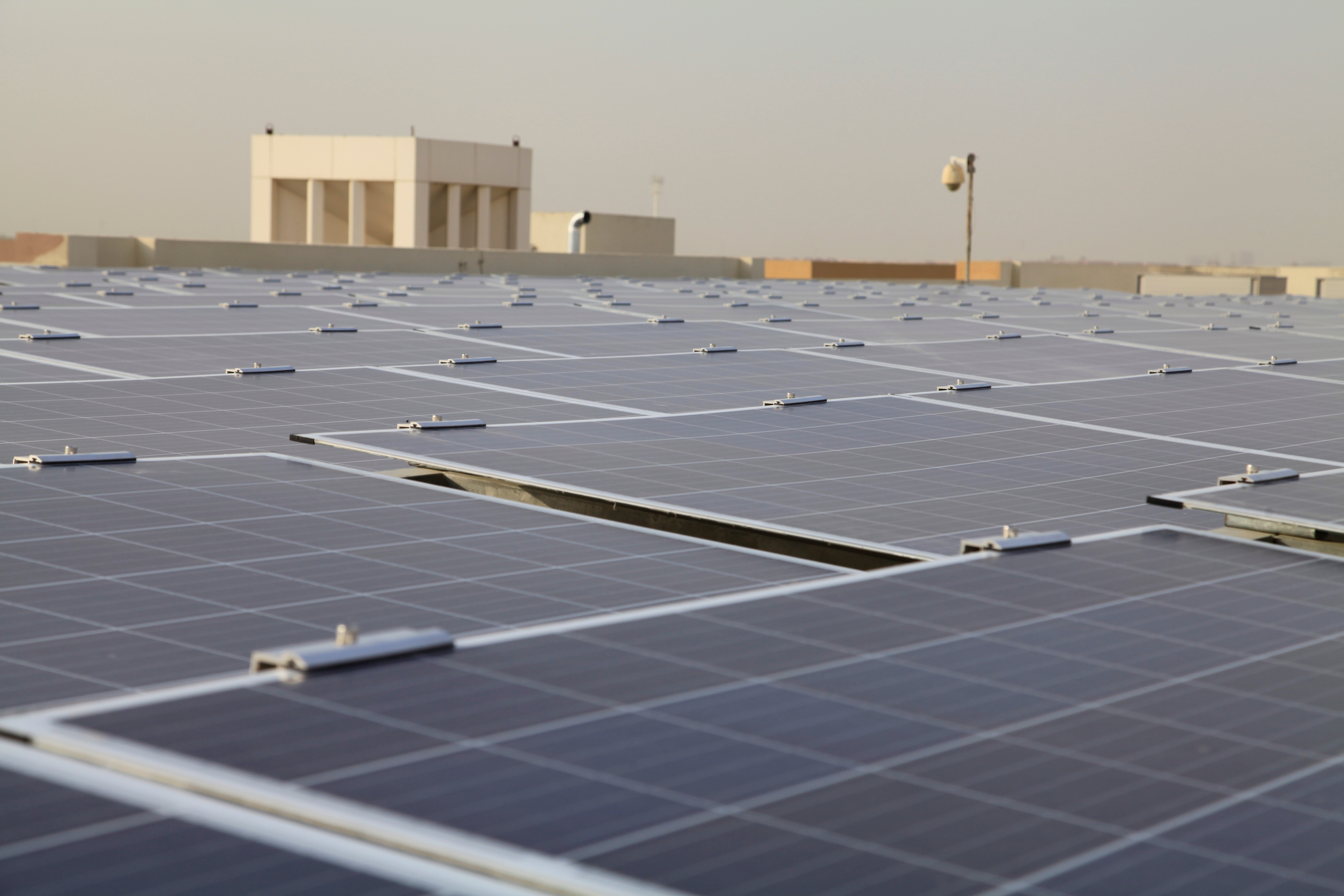
Water production and consumption is another opportunity for carbon saving. The UAE and much of the GCC rely almost exclusively on desalination to meet water demand. Seawater desalination is energy-intensive resulting in very high emission factors for potable water (about 6.16 kg CO2e per m3). Enhanced water efficiency through low-flow fixtures, double-flush toilets, and water saving appliances has helped reduce water consumption to 180 liter per person per day, which is at least 60% lower than the average residential water consumption in Dubai. By comparison, according to DEWA, the recommended water consumption for residential buildings is 250-350 liters per person per day. Additionally, all DEWA water entering the community is collected into two wastewater streams (grey and black,) treated on-site, and reused in landscape irrigation. The cumulative effect of water recycling is substantial on avoided emissions and financial savings.

Mobility within the community can also help achieve emission reduction. The Sustainable City has deployed 120 electric buggies to facilitate commute within the community. Charged from solar electricity, the fleet traveled 216,000 km in one year which is equivalent to 5.5 times around the equator – with zero emissions. Working in partnership with Dubai’s Road and Transportation Authority (RTA), The Sustainable City will be testing in 2018 an autonomous and driverless shuttle. The goal of this pilot project is to assess end-user perception and the impact of autonomous vehicles in a residential community. Equally important, car-free clusters has improved air quality and shifted mobility behaviors in favor of low-carbon transportation.
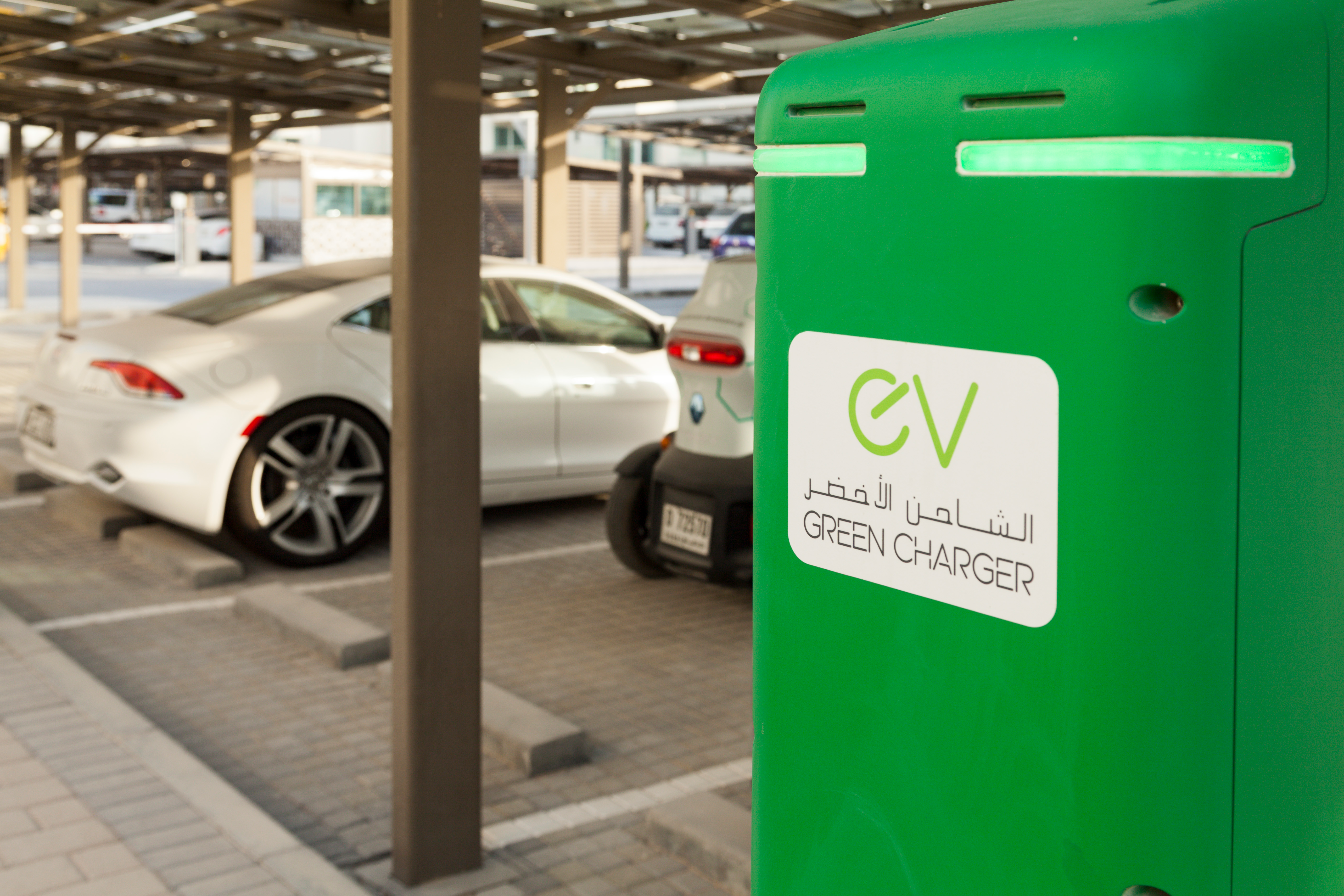
The Sustainable City is also helping accelerating the transition to Electric Vehicles (EV) and has deployed 14 charging stations around the community to encourage EV uptake. It should be noted that the carbon footprint of EV is potentially high during manufacturing (data on upstream emissions remains scarce or withheld by the automotive industry), and that emissions during operation are determined by the energy source. EVs in The Sustainable City are powered from solar energy and therefore result in zero emissions. Currently, 3% of households in the community have switched to EVs.
|
Waste disposal and management represents 3% of global greenhouse gas emissions. Effective waste management and diversion from landfills can therefore reduce emissions; methane, the most prominent landfill has, has a global warming potential 25 times greater than CO2. To achieve the highest possible diversion, The Sustainable City has provided sorting bins in each villa and sorting stations in all clusters. The sorted waste is collected and sent to a Materials Recovery Facility (Tadweer) for secondary sorting and processing into plastic granules, bales, and compost. The community also collects used cooking oil which is processed by a Dubai-based facility to produce bio diesel (Neutral Fuels). |
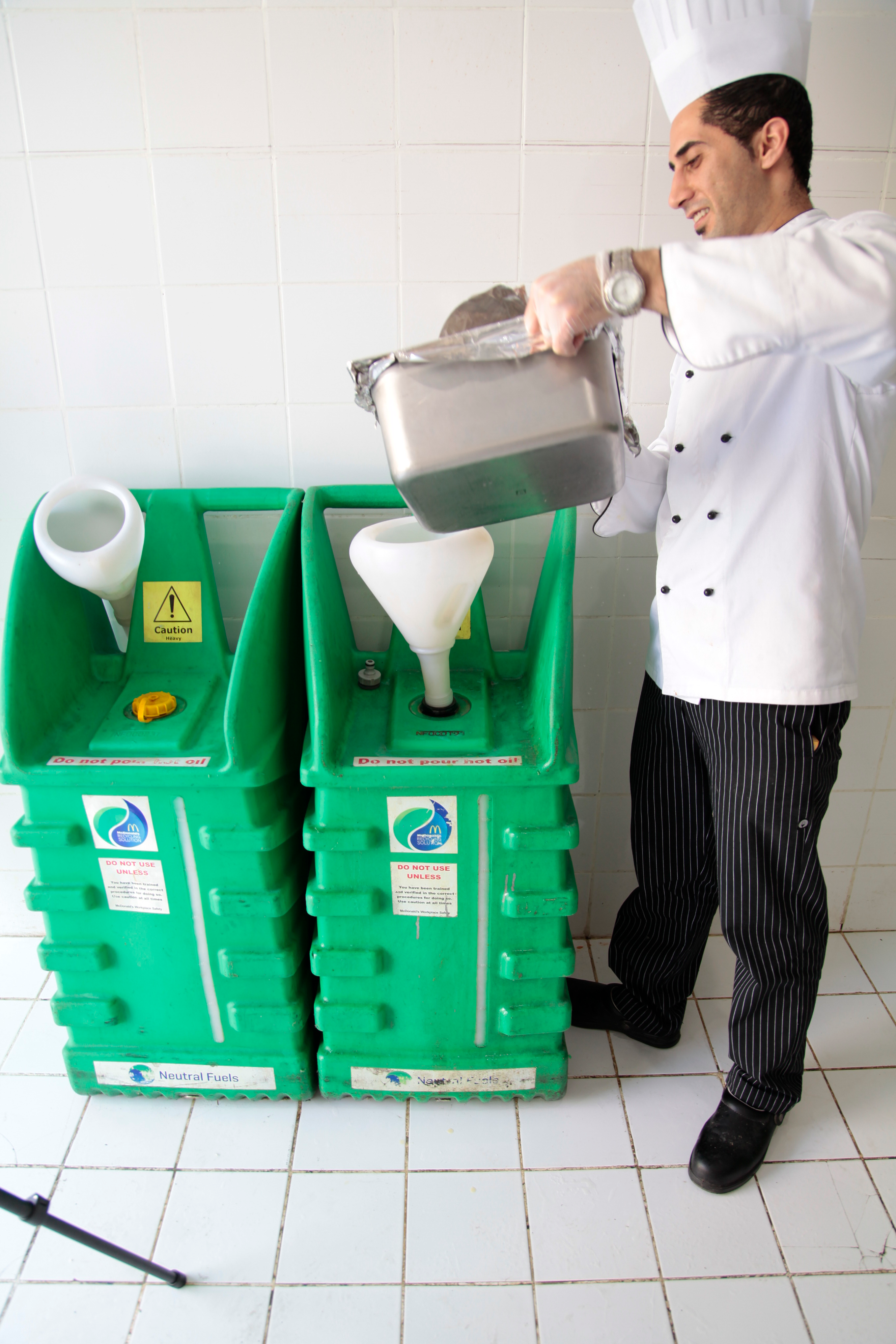
|
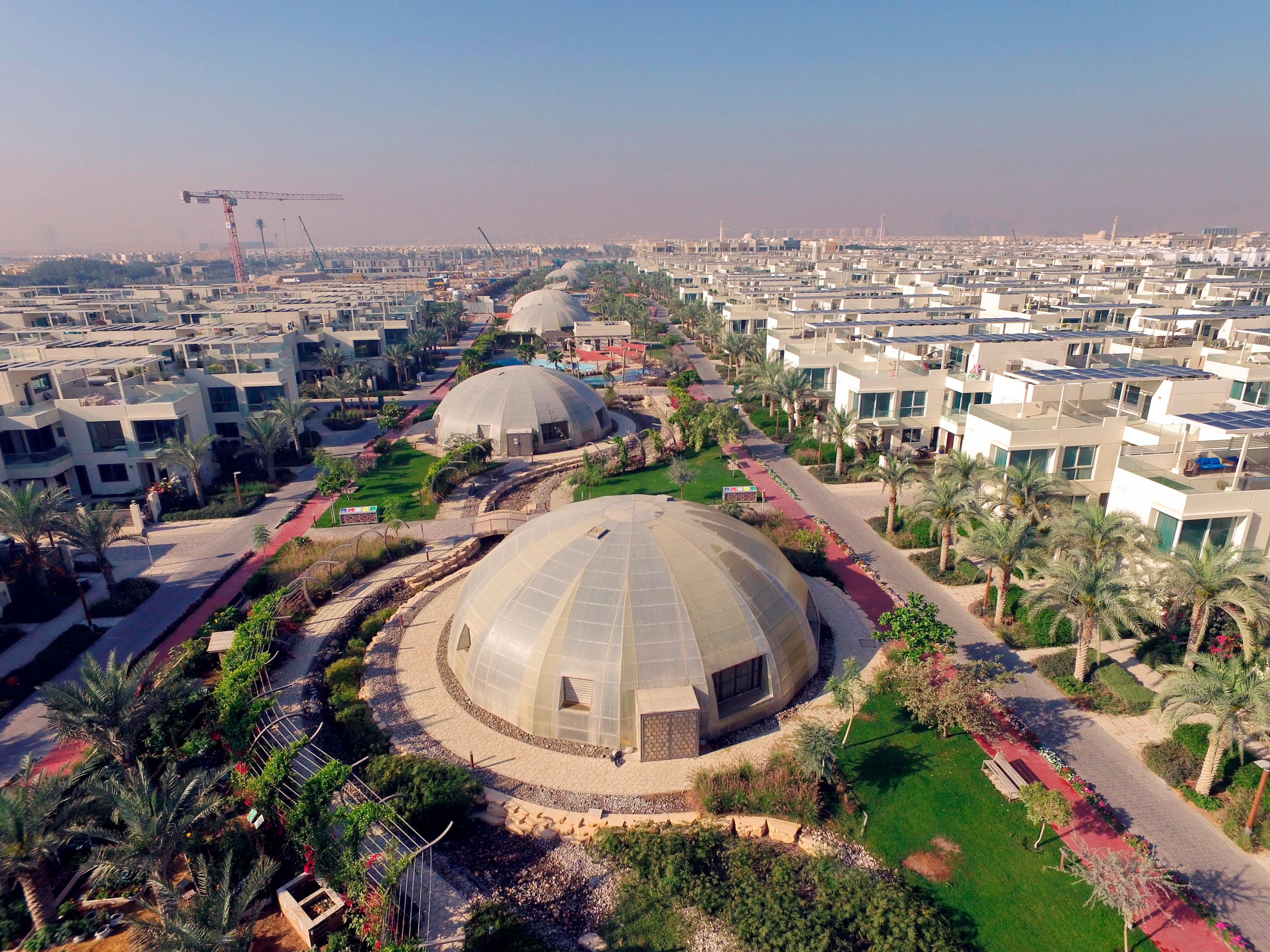
Food production can also achieve carbon savings by reducing food mileage as well as cold storage requirement. The Sustainable City’s urban farm comprises 11 temperature-controlled bio domes that produce leafy greens and vegetables. In 2017, the farm produced 400,000 potted herbs of which 10% was distributed to the residents for free.
The community will also be piloting vertical farming by repurposing a freight container into strawberry farms, working in partnership
with French start-up company (Agricool).
Looking ahead, the greatest challenge for low-carbon cities is reducing “upstream”
emissions by sourcing low-carbon construction material, and offsetting “downstream” emissions by advancing net zero and positive energy buildings.